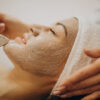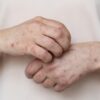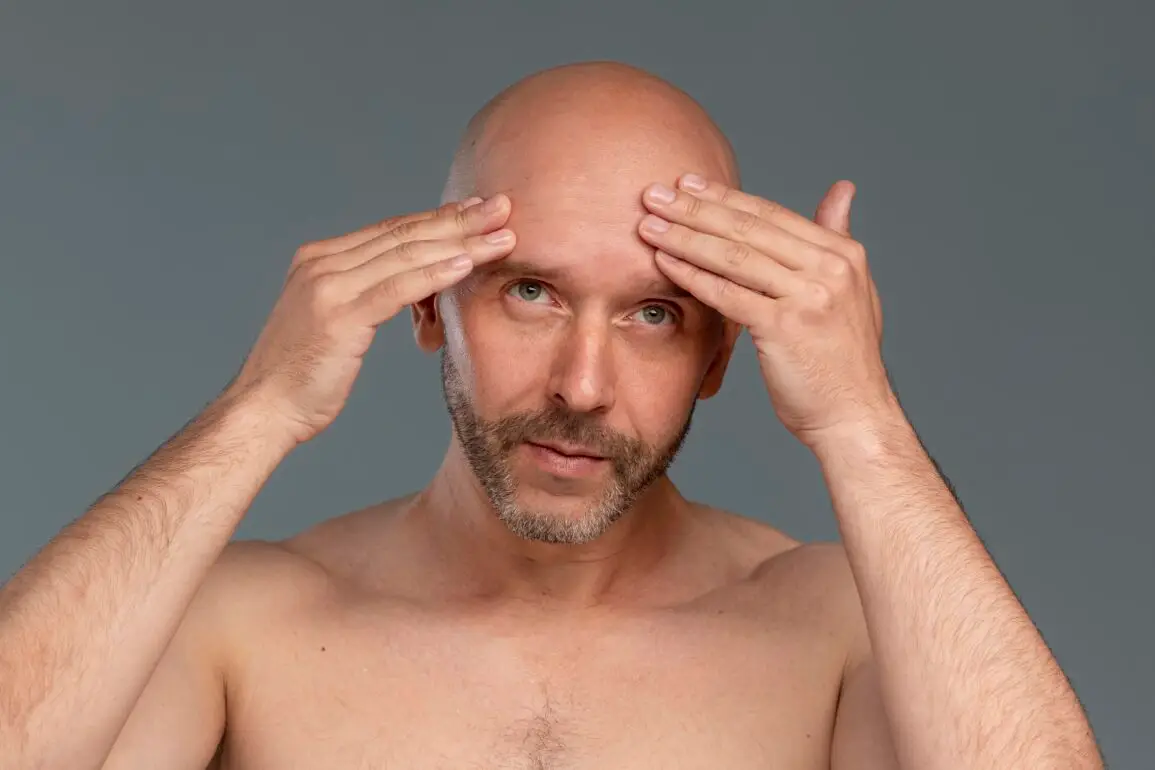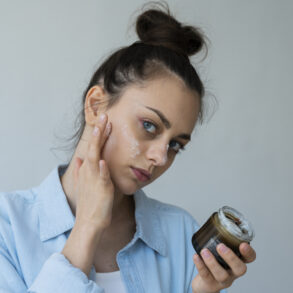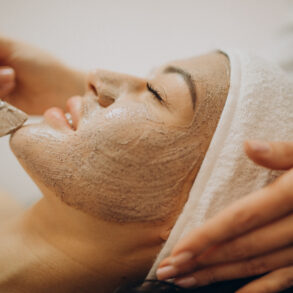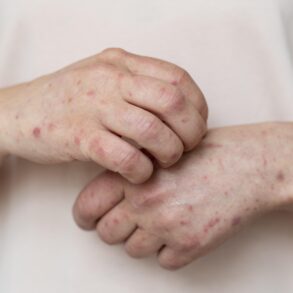Introduction to Alopecia Areata
Hair loss can be distressing, especially when it comes suddenly and without explanation. That’s exactly how Alopecia Areata strikes—sudden, patchy, and often emotionally jarring. This autoimmune condition causes the body’s immune system to mistakenly attack healthy hair follicles, leading to unpredictable hair loss. Unlike regular hair shedding or pattern baldness, Alopecia Areata often presents with smooth, circular bald patches on the scalp or body. It can affect anyone, regardless of age or gender, but it’s particularly common in people under 30.
More than just a cosmetic issue, it can take a toll on mental health, self-confidence, and social interactions. Whether you’re dealing with it yourself or supporting someone who is, understanding its causes, symptoms, and treatments can make all the difference.
Understanding the Causes of Alopecia Areata
Autoimmune Response
At the core of Alopecia Areata is a faulty immune reaction. The immune system, designed to protect you from harmful invaders like viruses and bacteria, goes haywire. It starts targeting your hair follicles as if they were the enemy, especially during the hair growth phase. This inflammatory attack disrupts the follicle’s function, causing the hair to fall out.
Genetic Predisposition
Genes play a big role. If someone in your family has Alopecia Areata or another autoimmune disease, your risk goes up. Scientists have pinpointed multiple genes linked to immune regulation and inflammation that are more common in people with this condition.
Environmental Triggers
Even with genetic predisposition, the condition may not appear without a trigger. Stress, viral infections, trauma, or major life changes can set off the immune system, leading to a sudden bout of hair loss.
Types of Alopecia Areata
Alopecia Areata Patchy
This is the most common form and is characterized by one or more coin-sized bald patches on the scalp or other parts of the body.
Alopecia Totalis
In this more severe form, all hair on the scalp is lost. It’s still considered a variation of the same autoimmune disorder.
Alopecia Universalis
This rare form results in complete hair loss on the entire body, including eyebrows, eyelashes, and facial hair.
Ophiasis and Sisaipho Patterns
These forms involve hair loss in specific patterns. Ophiasis affects the sides and lower back of the scalp, while Sisaipho (reverse Ophiasis) affects the central scalp.
Symptoms and Diagnosis
Early Signs to Watch
The first sign is often a small, round bald patch that appears suddenly. The skin in these patches feels smooth and may look slightly peachy. There’s usually no redness or scaling.
Other signs include:
- Tingling or burning sensations before hair falls out
- “Exclamation point” hairs—short broken hairs at the edge of bald patches
- Nail pitting or ridging
Diagnosis Process
Doctors typically diagnose Alopecia Areata based on clinical appearance. However, they might do a pull test (tugging on hair to see how easily it falls out), scalp biopsy, or blood tests to check for underlying autoimmune conditions.
The Psychological and Emotional Impact
Hair loss may be painless physically, but it can leave emotional scars. Many individuals with Alopecia Areata experience:
- Anxiety and depression
- Social withdrawal
- Loss of self-confidence
Coping strategies include therapy, support groups, and speaking openly about the condition. Knowing you’re not alone can be empowering.
Treatment Options for Alopecia Areata
Medical Treatments
- Corticosteroids: These reduce inflammation and suppress immune reactions. They come in the form of topical creams, oral pills, or injections. Injections are effective for small patches but must be repeated.
- Topical Immunotherapy: Chemicals like DPCP are applied to create a mild allergic reaction that stimulates hair growth.
- Minoxidil: Often used for general hair loss, it can promote partial regrowth in Alopecia Areata.
- Anthralin: Used to treat psoriasis, this can stimulate regrowth but often irritates the skin.
- JAK Inhibitors: A newer class of drugs showing promising results. Tofacitinib and Ruxolitinib help block the immune attack but can be expensive and require close monitoring.
Natural Remedies and Lifestyle Changes
- Essential Oils: Rosemary, peppermint, and lavender oils may promote growth.
- Dietary Adjustments: Anti-inflammatory diets rich in omega-3, zinc, and biotin can support scalp health.
- Stress Management: Yoga, mindfulness, and cognitive behavioral therapy (CBT) can lower flare-up risks.
Advantages and Disadvantages of Alopecia Areata Treatments
| Treatment | Advantages | Disadvantages |
|---|---|---|
| Corticosteroid Injections | – Highly effective for small bald patches – Quick action, visible results in 4–6 weeks – Administered directly at the site | – Painful; may require multiple injections over time – Risk of skin atrophy (thinning) – Temporary solution; hair loss may recur |
| Topical Corticosteroids | – Easy to apply at home – Non-invasive option for children and sensitive areas | – Less effective than injections – Can cause skin irritation with prolonged use – Slow visible results |
| Oral Corticosteroids | – Beneficial for widespread hair loss – Can suppress aggressive immune attacks | – Serious side effects with long-term use (weight gain, hypertension, bone thinning) – Not ideal for maintenance therapy |
| Minoxidil (Rogaine) | – Over-the-counter, widely accessible – Helps maintain regrowth post-treatment – Can be used with other therapies | – Limited effect in severe or total hair loss cases – Requires daily use; hair loss resumes if stopped – May cause scalp irritation |
| Topical Immunotherapy (DPCP, SADBE) | – Effective for large-scale or recurrent Alopecia Areata – Long-term regrowth possible | – Causes severe local allergic reactions (itching, redness, swelling) – Not widely available – Treatment duration can be long (6–12 months) |
| JAK Inhibitors (Tofacitinib, Ruxolitinib) | – Breakthrough treatment with high success rates – Targets the underlying immune dysfunction directly | – Expensive; not always covered by insurance – Potential long-term immune suppression – Not FDA-approved for Alopecia Areata (as of now) |
| Anthralin Cream | – Inexpensive and easy to apply – Stimulates regrowth by altering immune function in skin | – Causes significant skin irritation and staining – Takes months to show results – Not very effective on its own |
| Essential Oils (Rosemary, Lavender) | – Natural, holistic approach – Low risk of side effects – Can improve scalp health | – Limited scientific backing for efficacy – Results vary widely from person to person – Regrowth, if any, is slow and minimal |
| Dietary & Lifestyle Changes | – Promotes overall well-being – Supports immune balance – Helps reduce frequency of flare-ups | – Cannot cure or stop hair loss directly – Requires strict long-term commitment – Benefits take time to appear |
| Hair Transplant (Not usually recommended) | – May offer permanent coverage in stable conditions – Good for cosmetic satisfaction in mild cases | – Not suitable for active or recurring Alopecia Areata – Expensive – Hair may fall out again if autoimmune activity persists |
Summary of Treatment Insights
- Fastest Results: Corticosteroid injections show regrowth in weeks, ideal for small patches.
- Best for Extensive Hair Loss: Topical immunotherapy and JAK inhibitors have shown success in widespread or long-term cases.
- Most Convenient: Minoxidil is easy to use daily and widely available.
- Best for Children or Sensitive Users: Natural remedies and lifestyle adjustments are safe and gentle, though less effective.
- Most Promising Future Option: JAK inhibitors, though currently expensive and experimental, offer a new path for treatment.
Choosing the Right Treatment
The best treatment depends on:
- Extent of hair loss (patchy vs. widespread)
- Age and health of the patient
- Budget and availability
- Tolerance to side effects
- Emotional and psychological needs
When to See a Doctor
If you notice:
- Sudden patchy hair loss
- Hair falling out in clumps
- Changes in nail texture
- Hair loss with fatigue or other autoimmune symptoms
…it’s time to see a doctor. Dermatologists specialize in these conditions and can recommend treatment or further testing.
How to Protect Yourself from Alopecia Areata
Nutrition and Diet Tips
- Eat foods rich in biotin (eggs), zinc (pumpkin seeds), iron (spinach), and omega-3s (salmon).
- Reduce intake of inflammatory foods like processed sugars, fried foods, and alcohol.
Hair Care Tips
- Use gentle shampoos, avoid harsh dyes and treatments
- Minimize heat styling
- Don’t wear tight hairstyles that pull on hair follicles
Stress Reduction Techniques
- Daily mindfulness or meditation
- Regular physical activity
- Maintain work-life balance
Stages and Progression of Alopecia Areata
Initial Patch Development
Hair falls out in one or more coin-sized patches.
Active Progression
More patches appear or existing ones expand. Hair may fall from the beard, eyebrows, or limbs.
Chronic or Relapsing Stage
Some live with recurring episodes for years, while others may see it progress to total or universal loss.
Regrowth
Hair may regrow on its own. Initially white or fine, it can thicken and darken over time.
Detailed Differences Between Alopecia Areata and Other Hair Loss Conditions
| Hair Loss Type | Cause | Pattern of Hair Loss | Onset Speed | Associated Symptoms | Treatment Options |
|---|---|---|---|---|---|
| Alopecia Areata | Autoimmune disorder—immune system attacks hair follicles | Sudden round or oval bald patches, usually smooth and hairless | Rapid and unpredictable | May include nail pitting, tingling, or burning in scalp areas | Corticosteroids, topical immunotherapy, JAK inhibitors, Minoxidil |
| Androgenetic Alopecia | Genetic and hormonal—due to DHT hormone sensitivity | Thinning at temples and crown in men; diffuse thinning in women | Gradual over years | Typically none, though may cause psychological stress | Minoxidil, Finasteride (men), hair transplant surgery |
| Telogen Effluvium | Stress-induced disruption of hair growth cycle | Diffuse thinning across the scalp without bald patches | Sudden shedding 2-3 months after trigger | No scalp irritation; shedding seen during washing/combing | Address underlying cause, nutrition, stress reduction |
| Tinea Capitis | Fungal infection of the scalp | Scaly, red patches with broken hairs; may ooze or form pustules | Moderate onset over weeks | Itching, redness, scaling, black dots in scalp | Antifungal medications (oral), antifungal shampoo |
| Traction Alopecia | Physical stress from hairstyles (tight ponytails, braids, extensions) | Hair loss near front edges, temples, or where hair is pulled tightly | Gradual | Scalp tenderness, redness, or bumps | Change hairstyle, allow hair to rest, use of growth stimulants |
| Cicatricial Alopecia | Inflammatory scalp disorders leading to permanent follicle damage | Patchy hair loss with scarred areas; shiny, no visible follicles | Slow but permanent | Itching, pain, or burning; possible scalp lesions | Anti-inflammatory meds, early intervention crucial to prevent scarring |
| Trichotillomania | Psychological—compulsive hair pulling disorder | Irregular patches, broken hairs at different lengths | Varies by behavior pattern | Anxiety, stress, visible damage to scalp | Behavioral therapy, CBT, psychiatric support |
Key Takeaways from the Comparison
- Alopecia Areata is autoimmune and characterized by smooth, sudden bald patches, distinct from the gradual thinning of Androgenetic Alopecia.
- Telogen Effluvium causes even shedding across the scalp and often follows stress or illness.
- Tinea Capitis and Cicatricial Alopecia involve inflammation or infection with symptoms like itching, redness, and scaling, unlike the symptom-free patches of Alopecia Areata.
- Traction Alopecia is preventable and caused by hairstyles, while Trichotillomania is psychological and requires behavioral treatment.
Living with Alopecia Areata: Coping Tips
Cosmetic Solutions
- Wigs, scarves, hats, and headwraps
- Eyebrow microblading or false lashes
- Scalp micropigmentation for buzz-cut look
Emotional Support
- Therapy and counseling
- Online and in-person support groups
- Self-help books and journaling
Myths and Misconceptions
- Myth: It’s contagious — Truth: It’s not.
- Myth: Only adults are affected — Truth: Kids get it too.
- Myth: It’s permanent — Truth: Hair often regrows.
- Myth: Poor hygiene is to blame — Truth: It’s an autoimmune issue.
- Myth: It’s all caused by stress — Truth: Stress is a trigger, not the root cause.
Long-Term Management and Monitoring
Follow-Ups
Regular visits with your dermatologist are crucial for tracking changes and adjusting treatment plans.
Monitoring Triggers
Journaling symptoms, diet, and stress levels can help identify personal triggers.
Mindset Shift
Learning to love your appearance—hair or no hair—can be the most powerful form of healing.
Conclusion
Alopecia Areata can seem overwhelming, but knowledge is power. With a combination of medical care, lifestyle support, and emotional resilience, you can take control of your condition. Whether it’s navigating treatments, finding the right wig, or learning to embrace a bald head, remember this: you are not your hair. You’re stronger than you think, and you’re not alone on this journey.
FAQs
1. Can stress alone cause Alopecia Areata?
Not exactly. It can trigger it in genetically predisposed individuals but isn’t the only cause.
2. Will my hair grow back?
In many cases, yes—though regrowth may be patchy or take time.
3. Can it affect children?
Yes. Alopecia Areata can begin in childhood and continue into adulthood.
4. Are there any cures?
There is no permanent cure yet, but many treatments can stimulate regrowth and control symptoms.
5. Is it linked to other health issues?
It can coexist with other autoimmune diseases like thyroid conditions, vitiligo, or lupus.


